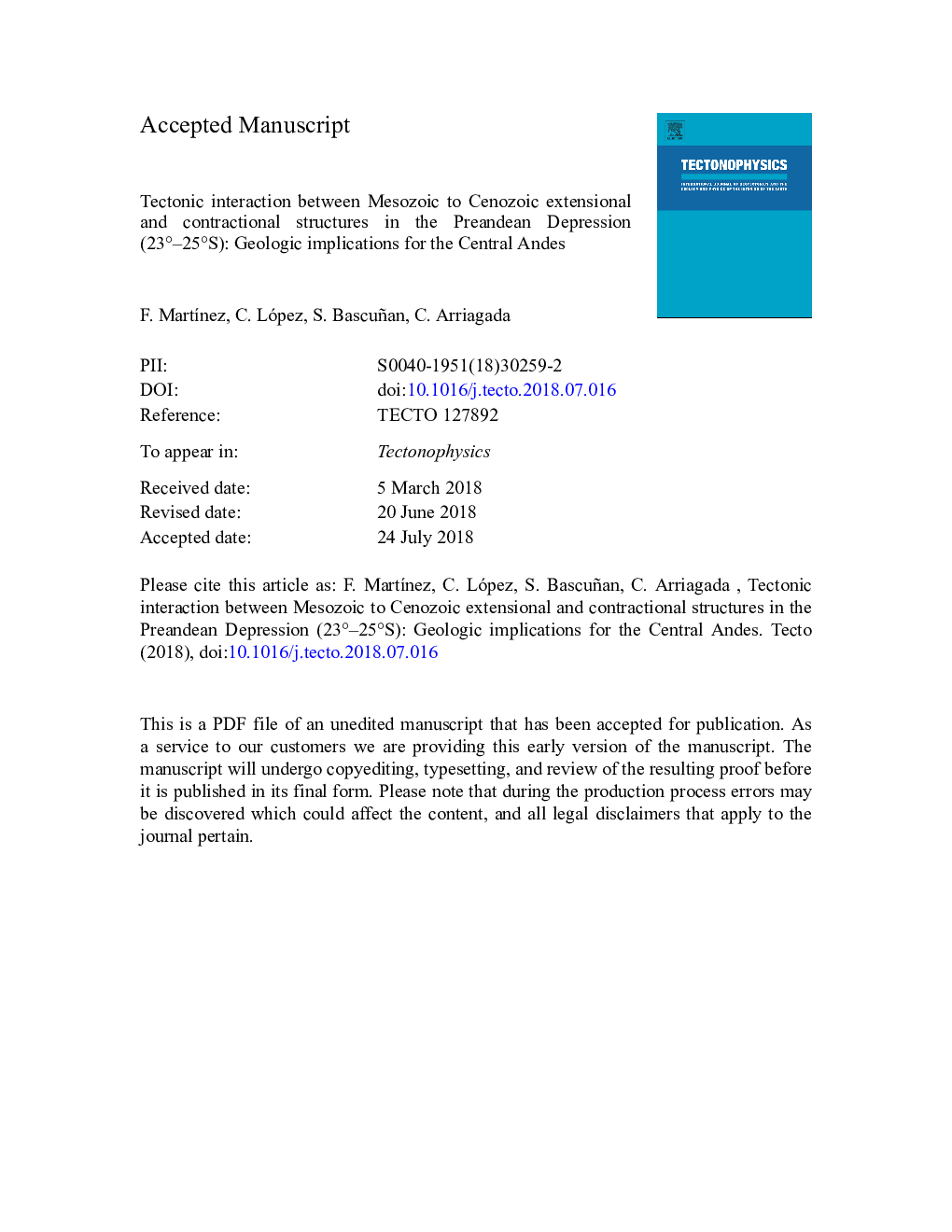| کد مقاله | کد نشریه | سال انتشار | مقاله انگلیسی | نسخه تمام متن |
|---|---|---|---|---|
| 8908617 | 1636672 | 2018 | 46 صفحه PDF | دانلود رایگان |
عنوان انگلیسی مقاله ISI
Tectonic interaction between Mesozoic to Cenozoic extensional and contractional structures in the Preandean Depression (23°-25°S): Geologic implications for the Central Andes
دانلود مقاله + سفارش ترجمه
دانلود مقاله ISI انگلیسی
رایگان برای ایرانیان
کلمات کلیدی
موضوعات مرتبط
مهندسی و علوم پایه
علوم زمین و سیارات
فرآیندهای سطح زمین
پیش نمایش صفحه اول مقاله

چکیده انگلیسی
A multidisciplinary study supported by field data and 2-D seismic information was conducted to understand the tectonic interactions between Mesozoic to Cenozoic extensional and contractional structures along the Preandean Depression (23°-25°S) in northern Chile, which have been largely debated. This work gives some new ideas about the control that ancient basement extensional faults exert on the crustal shortening and growth of those orogenic belts located over normal subduction zones similar to the Central Andes. In this work, two sedimentary basins were analyzed: the Salar de Atacama and the Salar de Punta Negra, both of which correspond to intra-montane basins bounded by the Domeyko Cordillera and the current volcanic arc of the Central Andes. The interpretation of a series of west to east-oriented 2-D seismic profiles revealed three types of structural interaction: i) pure positive reactivation; ii) decapitation of previous normal faults by reverse faults; and iii) transport of previous normal faults by thrust ramps. Inversion anticlines and basement-involved contractional structures were the most common observed structures, indicating that the geometry and distribution of inherited normal faults of the Paleozoic and Mesozoic basement played an important role in basin contraction. The different modes of tectonic interaction frequently created variations on the geometry and kinematic of the final structural styles present in the region. Commonly the Upper Cretaceous to Cenozoic synorogenic tectonosequences recorded the ages of contractional deformation that affected the region. Similar to other regions of northern Chile, basin inversion occurred during the Late Cretaceous and subsequent propagation of reverse faults occurred from the upper Late Cretaceous to the present. The basement-involved reverse fault structures usually create the most important positive topographic relief in this part of the western Central Andes. Using as example our study area, we finally conclude that the original position and distribution of ancient basement pre-orogenic normal faults in the orogenic belts condition the final vergence and kinematic of the subsequent thrust systems related to shortening episodes.
ناشر
Database: Elsevier - ScienceDirect (ساینس دایرکت)
Journal: Tectonophysics - Volume 744, 2 October 2018, Pages 333-349
Journal: Tectonophysics - Volume 744, 2 October 2018, Pages 333-349
نویسندگان
F. MartÃnez, C. López, S. Bascuñan, C. Arriagada,